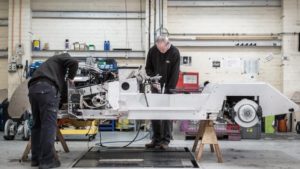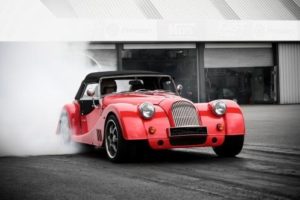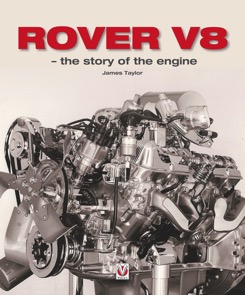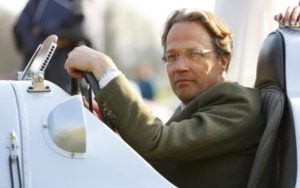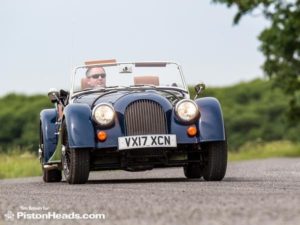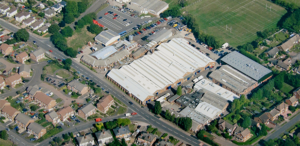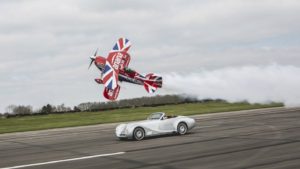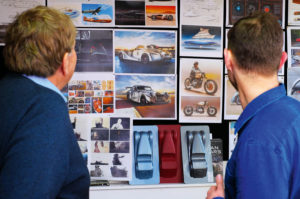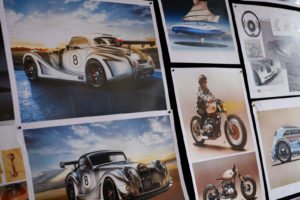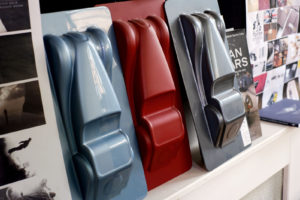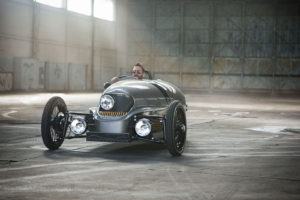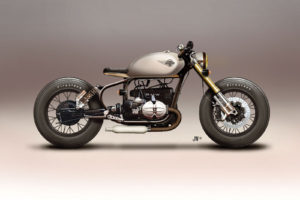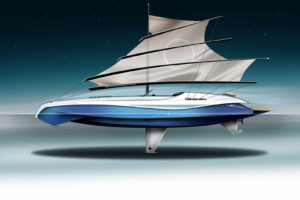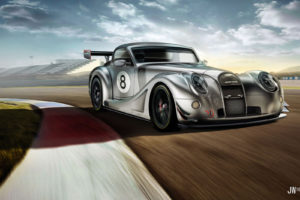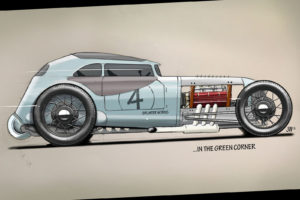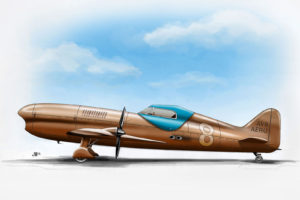The Voice of Experience – Gavin Green (August 2017 – Cars Magazine)
 Summer is here and when the sun shines a young man’s fancy turns to sports cars.
Summer is here and when the sun shines a young man’s fancy turns to sports cars.
So this (old) man heads to Malvern Link, home of Morgan, and to the driver’s seat of a 4/4, the world’s oldest new car, now in its 81st year of production.
Now of course Porsches and Ferraris go faster, Mazda MX-5s are sweeter to drive and Caterhams steer and stop better. But if your priorities are wind-in-the-hair fun, turn-up-the-volume driving engagement and a passport back to a gentler motoring era, then nothing can beat a Morgan.
They are mostly made as they always were: hand-built using mallets and files and saws and human sweat, and crafted from traditional materials. Indeed the frames of the oldest classic models, like the 4/4, are still made from ash. They are far more hand-wrought than any Bentley or Rolls-Royce, whose bodies are invariably made by machine and whose hand-craftsmanship is typically confined to cabin carpentry and trim leathersmithery, plus the odd commissioned bespoke flourish.
Little has changed since the 4/4 was new. Morgan is still an independent family-owned company. The manufacturing technique is so unusual and old-fashioned that factory tours (£20) are a popular attraction. Last year, 30,000 people took the tour and, in typical English style, it includes afternoon tea. It gets five stars on Trip Advisor.
Our Morgan has a modem 110bhp 1.6-litre Ford engine and a previous-gen Mazda MX-‘5 five-speed gearbox but in every other way it’s about as mechanically similar to a new saloon as a Spitfire is to a 787.
Take the windows. There are none. Instead, we find side screens that we unclip and leave behind. It is a beautiful summer’s day, so no need for weather protection. Also, no need to put up the fabric roof, coiled behind our heads. There are only two seats and entry is by a tiny shallow door, opened by a latch. The door has leather pull-straps. It appears to weigh nothing.

The steering wheel is wood rimmed and alloy spoked -forget about an airbag – and it’s large and upright, closer to your chest than a modern car’s. The dash is a plank of varnished walnut. The only digital display is total mileage. This is not a digital-age car.
Out front there is a little upright chrome-ringed windscreen, and a long bonnet, elegantly sculpted, hand formed and tethered-by leather straps. Little louvres help the engine breathe. We see twin like-frog’s eyes, and elegant sweeping round fenders.
The (optional) side-exiting exhaust is just under your right shoulder. It barks into action when you turn the key – you can smell the fumes on start-up – and the engine soon settles into an uneven and throaty idle.
Its smallness and all-aluminium body makes for a light car, just under 800kg. There is no power steering, so turning the big wood-rimmed wheel when stationary or at low speed requires shoulder and arm heft. Clutch and brake pedal are also heavy.
It feels and sounds fast but isn’t. This is a car that’s all about sensation, not measurement. Just as cycling at 20mph feels faster than driving at 60mph, so the Morgan feels fast beyond the speedo’s numbers. The ride is firm and easily unsettled and the handling lacks finesse. But what do you expect from an 8o-year-old design, whose rear suspension owes more to a wheelbarrow than double wishbones? Like all old cars, it needs manhandling and heft; anticipation and concentration; and, yes, just a little love and understanding.
It’s designed for the winding narrow roads of England of 70 or 80 years ago, which still gently crisscross much of the country’s rolling green land. They are wonderful driving roads. Speed is irrelevant. The slower, the better. You’re always interacting with your environment: with the weather, with nature and its many scents and sounds, and with the car itself. It is a different type of motoring, totally alien to the hermetically sealed air-conditioned cabins in which we today rush hither and thither, isolated from everything around us, in a world bulldozed for speed.
Every once in a while, it’s good to be transported back to sports cars of yore and to the driving world of yesteryear.
Only an old classic, or a new Morgan, can do this. It helps us to understand how much cars have improved and, just as important, how much raw driving enjoyment has been diluted.

